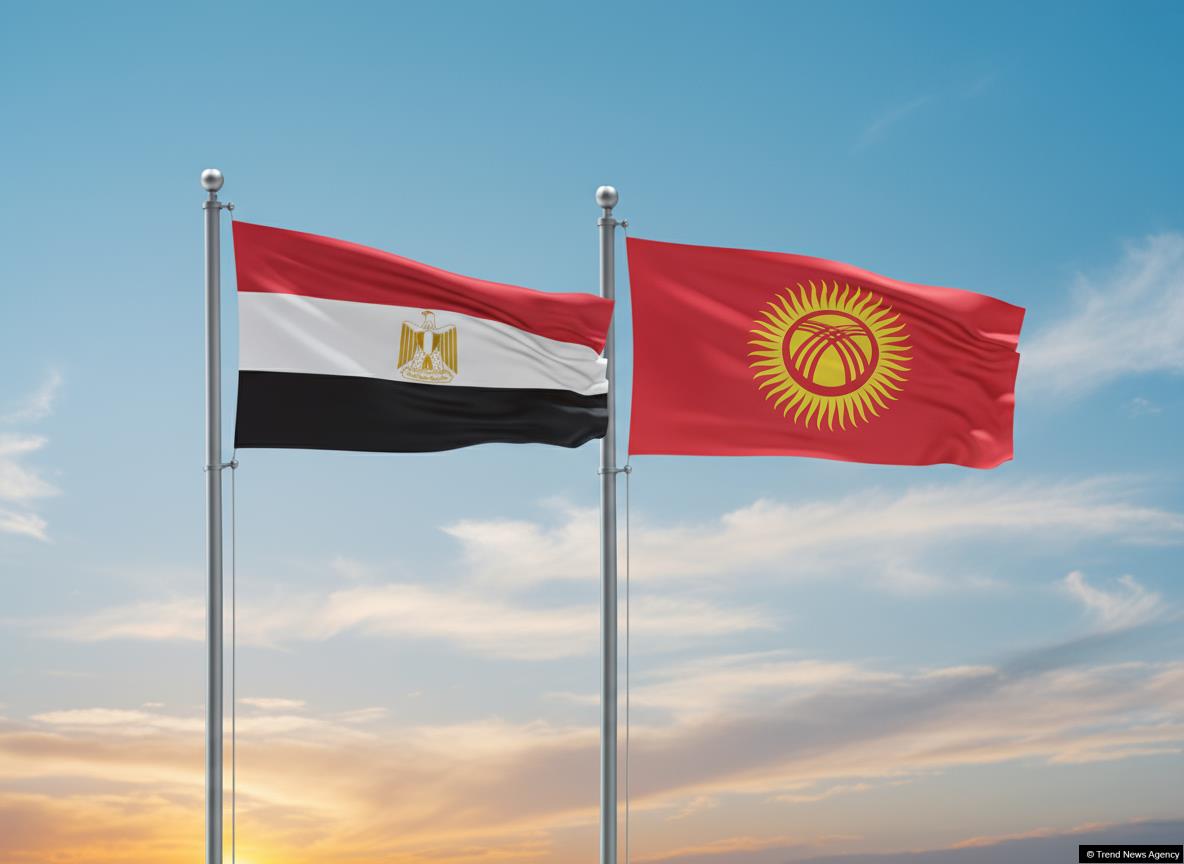
Kyrgyzstan Eyes Sea Access. Sadyr Zhaparov Heads To Egypt To Enhance Trade Links
In recent years, President Sadyr Zhaparov has pursued a policy aimed at reducing reliance on a limited number of trade routes and expanding partnerships beyond traditional markets. This strategy of economic openness and efforts to strengthen Kyrgyzstan's position in international logistics have laid the groundwork for engagement with regions such as Egypt, the Middle East, and North Africa.
The official visit of Kyrgyzstan's President Sadyr Zhaparov to Egypt on November 4–5, 2025, at the invitation of President Abdel Fattah el-Sisi, is regarded as a significant milestone in the advancement of bilateral relations. As the first-ever visit by a Kyrgyz head of state to Egypt, the trip itself is expected to draw heightened attention to economic cooperation and generate political momentum for future agreements.
The economic context underscores the visit's importance. In 2024, Kyrgyzstan's total foreign trade exceeded $16 billion, with approximately $4.99 billion (around 31 percent) originating from EAEU countries and $11.05 billion (approximately 69 percent) from other regions. Notably, imports from non-EAEU countries substantially surpassed exports by nearly 3.7 to 4 times, resulting in a significant trade deficit and rendering the economy vulnerable should established trade routes be disrupted.
The emphasis on finding new routes and partners reflects Zhaparov's strategy for diversifying foreign trade. Bishkek is actively promoting the idea of Kyrgyzstan's participation in global transport corridors, where Egypt can become not just a partner, but a link between Central Asia and the African and Mediterranean markets.
Trade between Kyrgyzstan and Egypt remains limited. In 2023, Kyrgyzstan's exports to Egypt totaled approximately $1.62 million. The main export items included aircraft and helicopters (around $773,000), refined petroleum products (approximately $760,000), and select aviation components ($39,000). Imports from Egypt amounted to roughly $3.03 million, primarily comprising packaged medicines, food products, and citrus fruits. The nature of Kyrgyzstan's export items appears atypical and may reflect re-exports or statistical anomalies - factors that should be taken into account when planning future trade strategies.
Egypt possesses the Suez Canal and developed port infrastructure, making it a potential vital maritime hub and access point to the markets of North Africa and the Mediterranean. However, success in the maritime part of the route depends on how well the land sections operate. It is necessary to ensure that transshipments through Caspian ports, ferry lines, rail and road links, as well as transit procedures in intermediary countries, do not slow down the process. Otherwise, speeding up the sea leg will not compensate for delays at transfer points.
Such complex logistics require political will, and it is precisely Zhaparov's consistent diplomatic activity in recent years - from strengthening ties with Türkiye, Iran, and the Persian Gulf countries to reaching out to the African continent - that makes such negotiations possible. Kyrgyzstan, which was previously rarely considered a participant in global maritime routes, is now becoming an active player in the discussion of transit corridors.
Therefore, the priorities include agreements on investment protection and double taxation avoidance to attract Egyptian funds to projects in Kyrgyzstan. Agreements on the mutual recognition of phytosanitary and veterinary certificates, the digitization of transit document exchange, and the implementation of cargo tracking systems are also needed. Coordination between customs and ports will help synchronize schedules and speed up transshipment.
By 2030, two plausible scenarios for trade development can be envisaged. In the first scenario, the parties implement practical logistics agreements, partially remove phytosanitary barriers, and initiate the digitization of transit processes. Such measures would facilitate a noticeable increase in agricultural and food exports and support sustainable trade growth. In the second scenario, the parties attract substantial investment in transshipment capacities across the Caspian Sea, Persian Gulf, and Egyptian ports, modernize ferry lines, and establish bilateral financial instruments. While this approach could yield significant trade expansion, it would necessitate considerable funding, time, and coordinated efforts among multiple countries and companies.
The primary objective of the Cairo visit extends beyond fulfilling a diplomatic milestone; it aims to initiate phased efforts to transform bilateral relations into tangible trade and logistics channels. This initiative represents a direct continuation of President Zhaparov's strategy to integrate Kyrgyzstan into new markets and reduce reliance on a limited number of routes. Only through a combination of political agreements, concrete logistics solutions, and targeted investments can Kyrgyzstan expand export opportunities and enhance economic stability.

Legal Disclaimer:
MENAFN provides the
information “as is” without warranty of any kind. We do not accept
any responsibility or liability for the accuracy, content, images,
videos, licenses, completeness, legality, or reliability of the information
contained in this article. If you have any complaints or copyright
issues related to this article, kindly contact the provider above.


















Comments
No comment